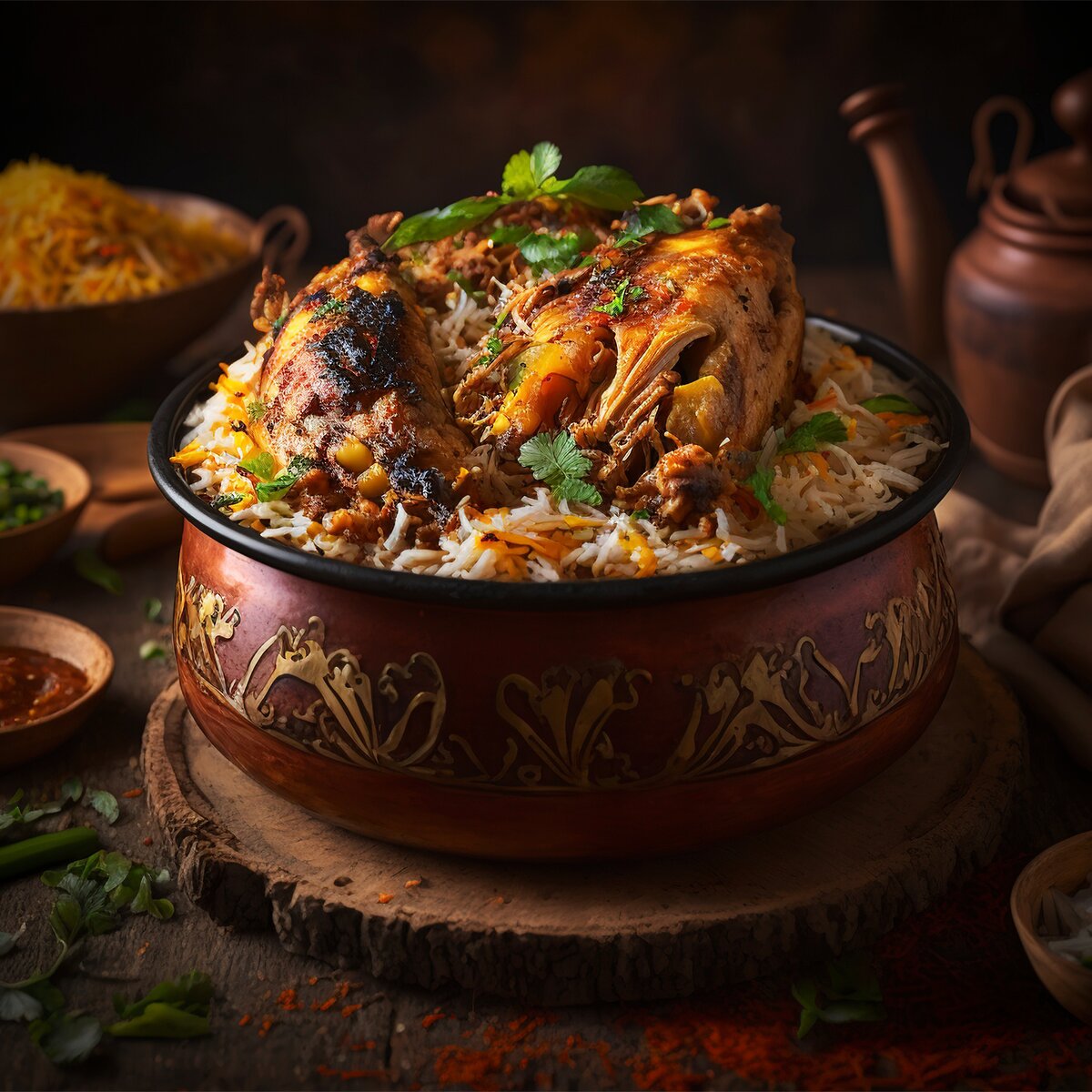
Gastronomy
Gastronomy is a rich blend of tradition, spice, and unique flavors that tantalize the taste buds. From fiery street food to royal delicacies, every dish tells a story of heritage and culture. Whether you're savoring Hyderabadi biryani or local millet-based treats, every bite is a culinary adventure.

Telangana’s gastronomy is a rich blend of spicy, flavorful, and diverse dishes that reflect its cultural heritage and regional influences. The cuisine is known for its bold flavors, generous use of spices, and a mix of both vegetarian and non-vegetarian delicacies. Influenced by Telugu traditions and the royal kitchens of the Nizams, Telangana’s food culture is a perfect balance between rustic, local flavors and refined, Mughal-inspired dishes.
At the heart of Telangana’s culinary landscape is its staple diet of rice, millets, and pulses. Jonna rotte (jowar roti) and Sajja rotte (bajra roti) are commonly eaten with spicy chutneys, pickles, or curries. One of the most popular Telangana dishes is Sarva Pindi, a spiced rice flour pancake made with green chilies, ginger, and sesame seeds, cooked to a crispy texture. Another beloved dish is Sakinalu, a crunchy deep-fried snack made from rice flour and sesame seeds, often prepared during festivals like Sankranti.
The state is also famous for its fiery curries and chutneys. Telangana’s cuisine features an array of tangy and spicy chutneys made from tamarind, gongura (sorrel leaves), and raw mango. Gongura Pachadi, a signature dish, is a sour and spicy chutney that pairs perfectly with hot rice and ghee. Another favorite is Nimmakaya Pulihora, a lemon-flavored rice dish that is tangy, aromatic, and refreshing.
Non-vegetarian dishes hold a special place in Telangana’s culinary tradition, with mutton, chicken, and fish cooked in rich, spicy gravies. Hyderabadi Biryani, the most famous dish of the region, is a fragrant rice dish cooked with basmati rice, saffron, and marinated meat, influenced by Persian and Mughal cuisine. Another delicacy is Haleem, a slow-cooked stew made from wheat, lentils, and meat, popular during the month of Ramadan. Telangana’s unique take on mutton curry, known as Golichina Mamsam, is a fiery preparation cooked with freshly ground spices and slow-roasted to perfection.
Street food is an integral part of Telangana’s gastronomy. The bustling markets of Hyderabad and other cities offer a variety of snacks, from spicy Mirchi Bajji (stuffed and fried green chilies) to Osmania Biscuits, which are soft, mildly sweet biscuits that originated in the kitchens of the Nizams. Irani Chai, a strong and milky tea served with biscuits, remains a favorite among locals.
Sweet dishes in Telangana reflect both Telugu and Hyderabadi influences. Qubani ka Meetha, a dessert made from dried apricots, sugar, and almonds, is a royal treat served with fresh cream or ice cream. Double ka Meetha, a Hyderabadi version of bread pudding made with fried bread, milk, and dry fruits, is another popular dessert. Traditional sweets like Ariselu, a deep-fried rice flour and jaggery delicacy, and Pootharekulu, a thin rice paper sweet stuffed with sugar and ghee, are commonly prepared during festivals and celebrations.
Telangana’s gastronomy is an explosion of flavors, combining the robustness of Telangana’s rustic cuisine with the refinement of royal Hyderabadi dishes. Whether it’s the spice-laden curries, hearty millet-based staples, or indulgent sweets, the state’s food culture is deeply rooted in tradition while continuously evolving with modern influences.